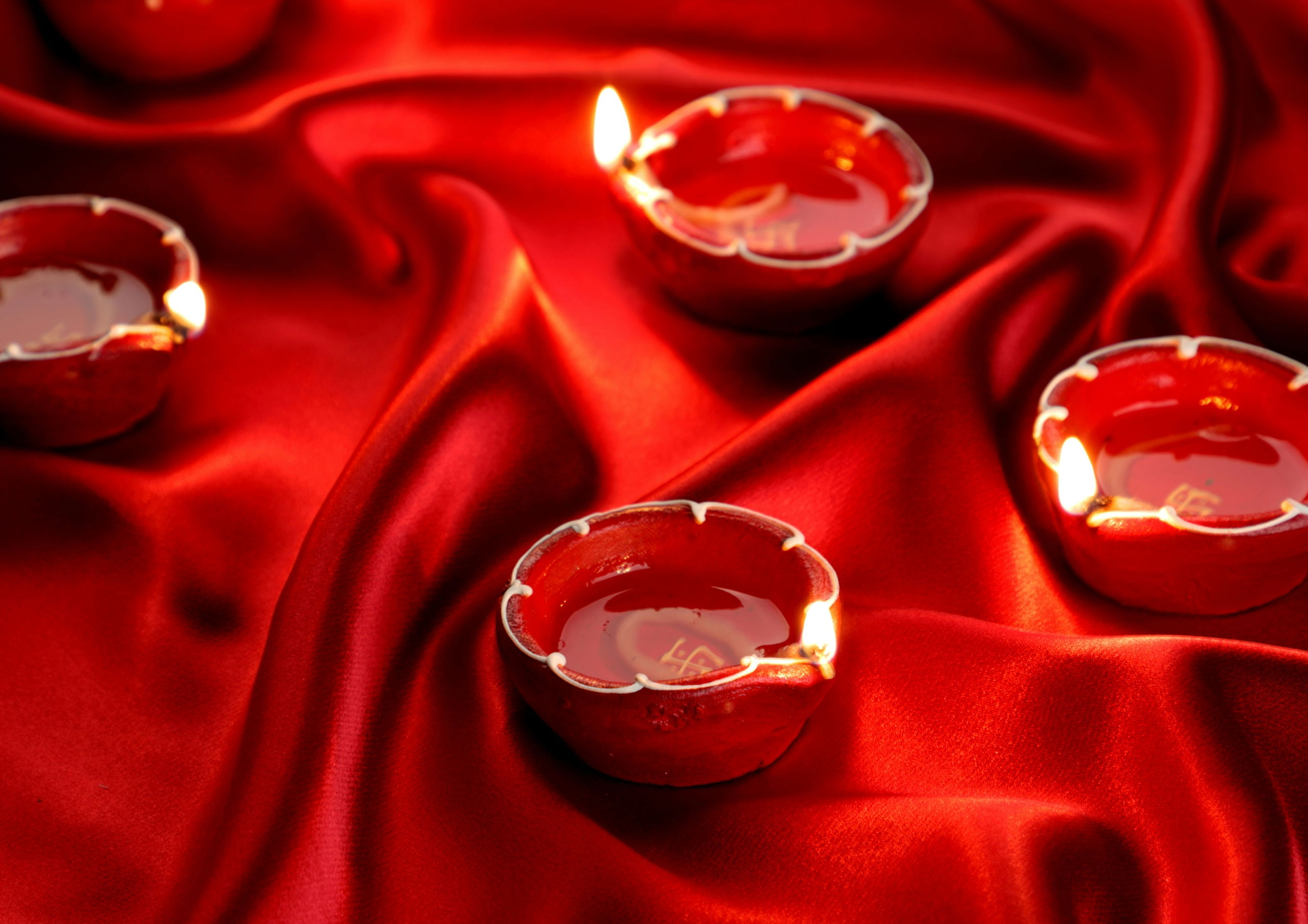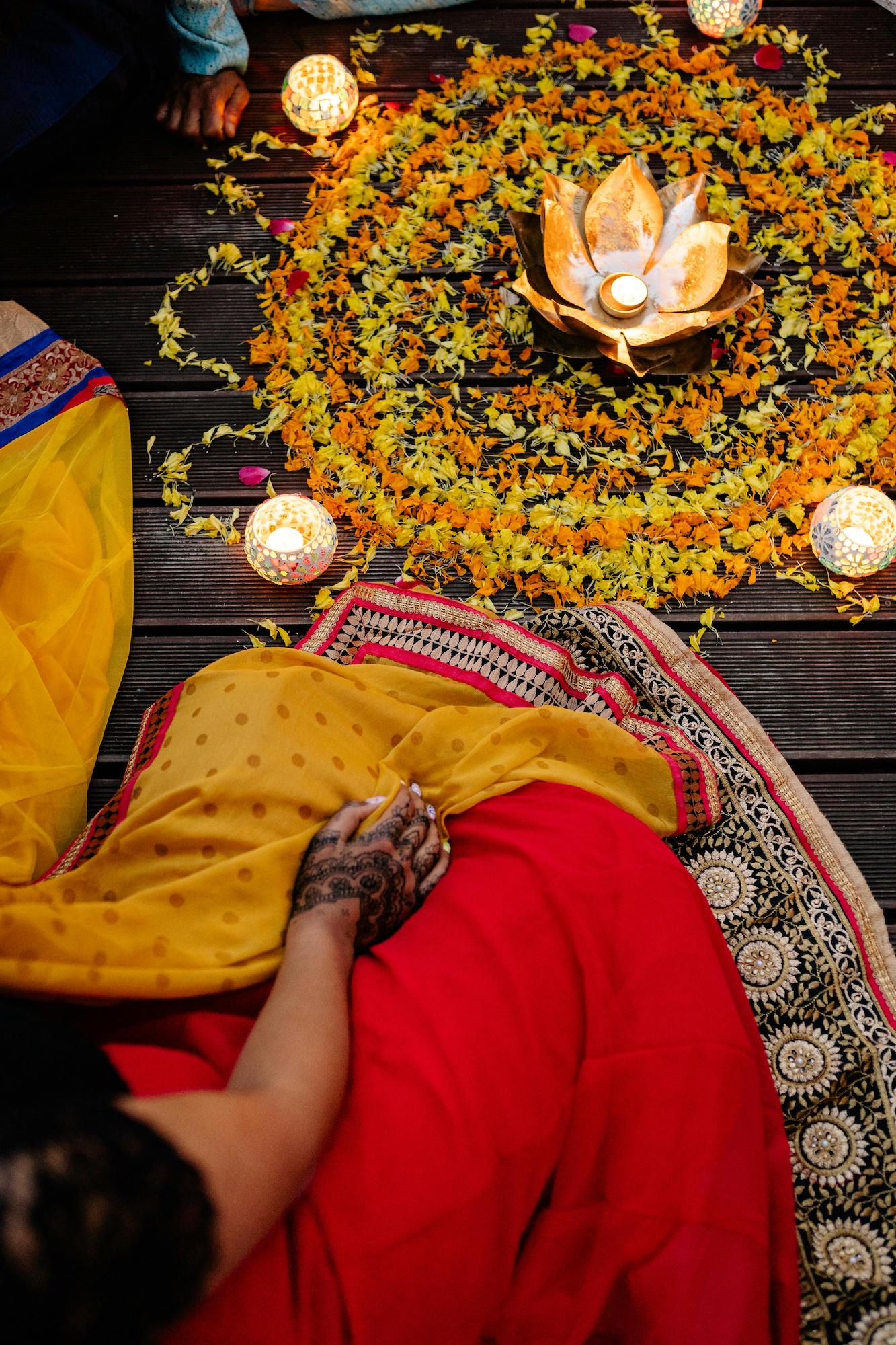
What to wear, what to bring, and how to celebrate one of the most beloved and unifying celebrations in Indian culture.
Each autumn, as the monsoon clouds drift away and the air cools, India begins to shimmer. Street vendors hang garlands of marigolds from shop awnings. The scent of ghee and incense mingles in the evening air. Across cities and small towns, from the sandstone courtyards of Jaipur to the high-rises of Mumbai, windows glow with the soft light of flickering diyas. This is Diwali, the Festival of Lights, and one of the most beloved and unifying celebrations in Indian culture.
The Meaning of the Light and the Meaning of Diwali
Diwali, or Deepavali (“row of lamps”), is rooted in ancient Hindu mythology and observed by Hindus, Jains, Sikhs, and Buddhists around the world. The festival celebrates the triumph of good over evil, light over darkness, knowledge over ignorance. In the north, it recalls Lord Rama’s return home after defeating the demon Ravana. In the west, it honors Lakshmi, the goddess of wealth and prosperity. In Bengal, it coincides with the worship of Kali.
Though interpretations vary, the essence is shared: renewal and illumination. Homes are swept clean, debts repaid, relationships mended. Families gather to give thanks for abundance—both material and spiritual—and to invite good fortune for the year ahead.

The Rhythm of the Diwali Celebration
Diwali spans five days that build toward the new moon of the Hindu lunar calendar, usually in late October or early November. The first day, Dhanteras, marks the start of auspicious shopping, often for gold jewelry or new kitchenware, symbols of prosperity. On the second, Naraka Chaturdashi, homes begin to glow with lamps to dispel darkness. The third day, Lakshmi Puja, is the festival’s radiant peak, when prayers are offered, fireworks burst over rooftops, and sweets are exchanged among neighbors.
In the days that follow, families continue the feasting and gift-giving, visiting friends and honoring siblings with small tokens of affection. During Diwali, even the most ordinary moments feel extraordinary. Imagine the sound of crackling sparklers, the clatter of bangles against porcelain dishes, and the steady hum of conversation rising and falling like the flame of a lamp.
What to Wear for Diwali
Diwali is a festival of abundance, and the clothing reflects that sense of joy. Gold, saffron, crimson, and royal blue dominate—a celebration of light itself. Women often wear silk or chiffon saris edged with metallic thread, or lehengas embroidered in gold. Men favor kurtas in jewel tones, paired with fitted trousers or churidars.
Traditionally, black is avoided, as it symbolizes mourning. Instead, shades that echo fire and sunlight like yellow, red, and orange, are thought to invite prosperity and good energy. Jewelry adds its own layer of storytelling. Bangles chime softly as guests greet one another, and delicate gold earrings catch the glow of candlelight. Dressing for Diwali isn’t about opulence for its own sake—it’s about reverence for the occasion, for the gods invited into one’s home, and for the community gathered in celebration.


How to Celebrate Diwali at Home
Even far from India, it’s easy to channel the warmth of the holiday. Begin at your doorway by lighting a row of small candles or diyas to welcome prosperity and push away darkness. Scatter flower petals or draw a rangoli—a pattern made from colored powders or rice flour—at the entrance. The act of creation is meditative, meant to bring calm and intention to the celebration.
Inside, fill the air with the aroma of spiced chickpeas, saffron rice, or a tray of sweets like ladoo and barfi. Share them with friends or neighbors, just as families in India trade boxes of confections wrapped in gold foil. The heart of Diwali is generosity; even a single candle lit in good spirit becomes part of a much greater glow.
The Right Greeting for a “Happy Diwali”
When you arrive at a Diwali celebration, a simple “Happy Diwali!” or “Shubh Deepavali!” feels both warm and respectful. The Sanskrit “shubh” means “auspicious,” a reminder that this greeting carries deeper wishes than happiness alone—it’s for peace, prosperity, and light in the year to come.
Experience the Light and Travel to India
To experience Diwali in India is to witness generosity made visible. In Varanasi, lamps drift down the Ganges like constellations set afloat. In Jaipur, the facades of the Pink City glitter with golden bulbs strung in perfect rows. In every home, a flicker of flame reflects centuries of devotion—a quiet promise that even in the darkest moments, light will always return.
For those who wish to travel to India, Diwali is not only a time to observe but to understand that celebration, at its core, is an act of gratitude. To join the festival is to glimpse the spirit that runs through India itself—resilient, luminous, and endlessly giving.

India Tour with Pushkar Marathe




